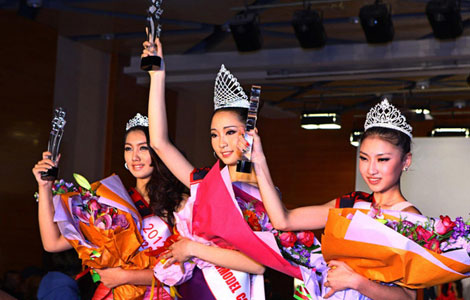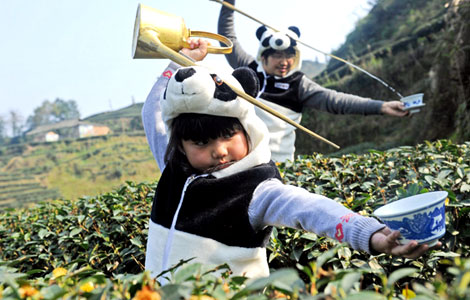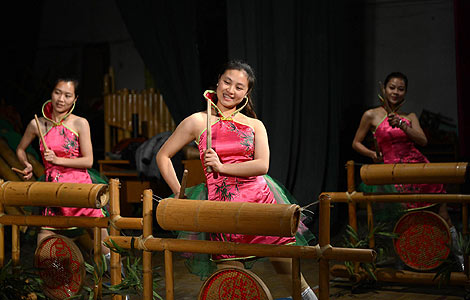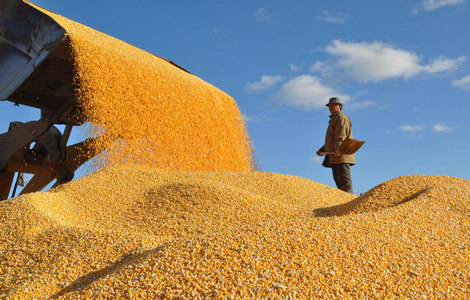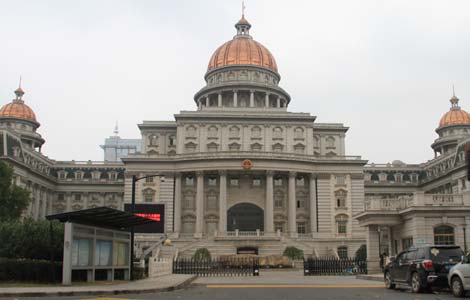
The textile industry continues to pose environmental challenges for China despite the total number of factories operating in the country shrinking, according to a report released on Monday by five NGOs.
Adidas announced plans to close its last factory in China in July and many other international brands have gone the same way.
"But if we look deeper into the problem, we’ll find that what we’ve lost in share of exports was mainly concentrated in the garment processing sector of the textile industry, which provides large amount of jobs with relatively low water and energy consumption and pollution discharges," said Ma Jun, executive director of the Institute of Public and Environmental Affairs, one of the five NGOs that released the report named Sustainable Apparel's Critical Blind Spot.
In raw material processing sectors such as dyeing and printing, which are responsible for more than 80 percent of the textile industry's pollution discharges, China is still in pole position.
According to figures released by the 2011/2012 China Textile Industry Development Report, the export of printing and dyeing products amounted to almost $17 billion in 2011, an increase of about 31 percent compared with 2010, while the export of textile products grew by less than 0.5 percent.
The mass production of raw materials in China has resulted in the industry being one of the most severe water polluters in the country.
According to the 2010 Annual Statistic Report on Environment in China published by the Ministry of Environmental Protection the textile industry created almost 2.5 billion cubic meters of sewage in 2010, ranking third among 39 industries monitored.
"It is also the industry with the lowest usage of recycled water," said Ma.
Against this grim background Monday's report said that many brands’ environmental management of their supply chains extended no further than their first tier of suppliers, usually cut and sew factories.
In many cases they have very little understanding of the environmental impact caused by their materials suppliers and in some cases brands are unable to even identify who those suppliers are. This leaves a dangerous blind spot in the textile industry that means it fails to identify when companies lower their level of environmental protection in order to reduce costs and win orders, the report said.
To push brands to go greener, the five NGOs released a report in April, listing environmental problems caused by the material suppliers of 46 domestic and international fashion brands.
Over the past half year six of those brands have taken positive action, establishing regular screening mechanisms to identify polluters in their supply chains and forcing more than 200 suppliers to explain their poor records on pollution.
H&M, Adidas, Nike and Levis have gone a step further and extended their management to dyeing and printing suppliers, Ma added. But the majority of brands have made no changes.
In October 2011, the State Council established rules to control emissions of chemical oxygen demand and ammonia nitrogen, two major pollutants commonly released by the dyeing and printing sector.
In August, it put in place a detailed plan to reduce levels of chemical oxygen demand by 10 percent and ammonia nitrogen by 12 percent before 2015.
Huang Xiaozeng, deputy head of the pollution emission control department of the Environmental Protection Ministry, said efforts to reduce pollution in the textile industry have long been focused on the dyeing and printing sectors.
"I think it will be good if fashion brands can be more responsible for their suppliers," he said. "It is very likely to be more effective in reducing pollution in this industry."
wuwencong@chinadaily.com.cn
